Magical Miami
Art, design and cuisine in many forms flourish in Florida’s ‘Magic City’
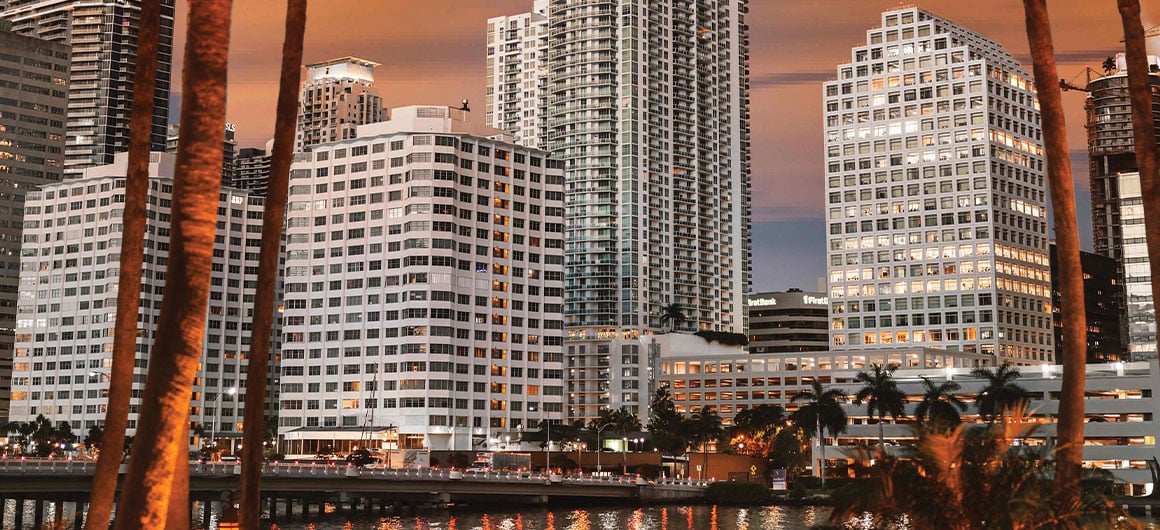

In the last 15 years or so, Miami has emerged from the long shadow of Miami Beach, its glitzy sibling. No longer just a place to fly into before immediately crossing to sandier shores, the mainland offers all of the sophistication and culture you’d expect from the one of the largest cities in the Southeast. Plus, it moves to its own beat, one filled with the tastes and sounds of Latin America, a thrumming place where the vivid pinks and oranges of tropical flora turn the streets into Carnival every day.
Today, the kinds of nationally acclaimed restaurants, stylish hotels and world-class shopping that used to be found only in plush malls on the island or in the suburbs dot the city’s many disparate neighborhoods. And while attractions like Wynwood Walls and Perez Art Museum place an emphasis on provocative and new art, there’s plenty of Old Florida charm here, particularly around leafy Coconut Grove, the city’s oldest residential enclave.
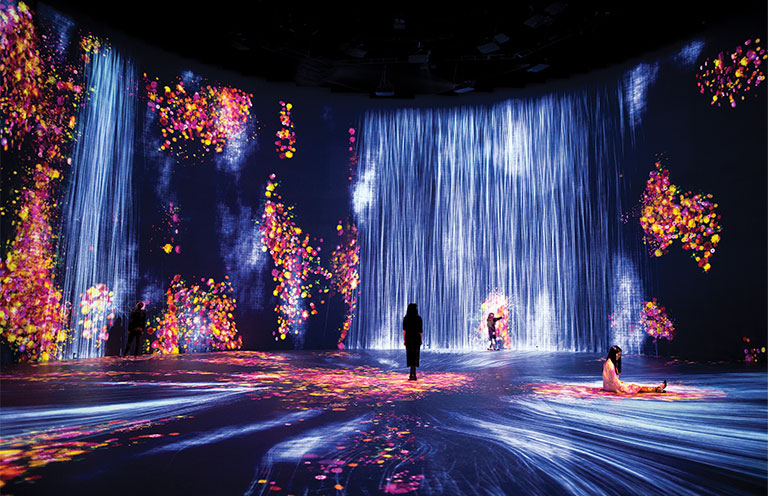
Art anytime
Miami has benefitted greatly from the success of Miami Art Week, which includes Art Miami, Design Miami and Art Basel Miami Beach, among other fairs. Now in its 23rd year, the event draws thousands of art collectors and dealers each December. The city’s abundance of wealthy citizens and its prime geographical position as “Gateway to the Americas” (because of its cultural and economic ties to Latin America) has further spurred Miami to step up its visual arts scene year-round.
Perhaps nothing better exemplified this momentum than the 2013 opening of the Perez Art Museum, which allowed the previously named Miami Museum of Art to relocate and expand its galleries as part of a beautifully landscaped downtown campus right on Biscayne Bay. Focused on international modern and contemporary art that illustrates the American Hispanic experience, the African diaspora, and Latin American and Caribbean cultures, the permanent holdings of the Perez include paintings, sculpture, video, photography and installations from artists such as Diego Rivera, Dan Flavin, John Baldessari and Mark di Suvero.
A bit north from the Perez, Superblue opened a few years ago in a massive warehouse featuring 30-foot ceilings. Those ceilings come in handy for the soaring set pieces that have come to roost. Unlike more familiar versions that project the paintings of, say, Vincent van Gogh or Gustav Klimt, these theatrical works are site specific, original and beg the presence of the viewer. The inaugural exhibition, still in place, encourages viewers to help teamLab’s digital “garden” grow; walk up, down and around a mirrored labyrinth by Es Devlin; and bask in the glow of 3,000 lightbulbs, suspended and wired by Rafael Lozano-Hemmer, as they twinkle and dim in response to their viewer’s individual heartbeats.
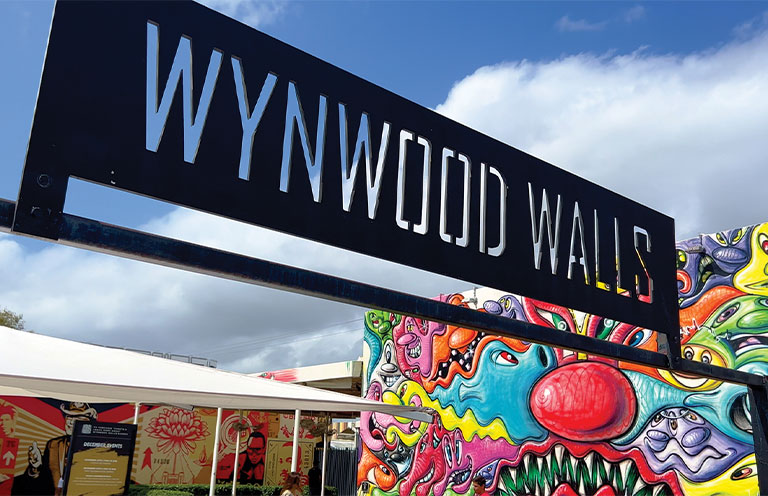
Another unique art experience is Wynwood Walls, an open-air museum situated amid a neighborhood once filled with abandoned buildings whose surfaces became canvases in the hands of spray-can-bearing artists. Visitors now pay good money to stand before a set of “legacy walls” riotously painted by the OGs of street art—including Shepard Fairey, Kenny Scharf and Futura 2000—before happily moving on to a changing array of another 40 or so works by today’s top muralists. Bigger, bolder and more beautiful than ever after 15 years, the Walls are the top selfie magnet in town.
But street art is everywhere in this neighborhood, and one good way to enjoy it is to grab a meal at any of a bevy of restaurants—try Wynwood Diner for platters like chicken and waffles, the Mad Butcher for burgers and Novela Café Social for all-day brunch—whose walls are splashed with vibrant flora, scribbled text and eye-catching graphics.
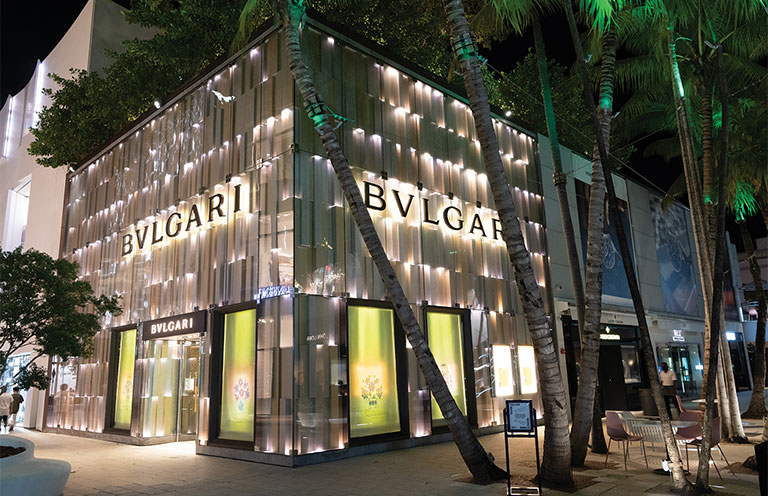
Designing neighborhoods
About a mile farther north, shoppers brandish glossy bags from an alphabetsoup of luxe designers (from Alexander McQueen to Van Clef & Arpels), furnish their dream homes at showrooms like B&B Italia and Minotti, and gatherto soak up the sun around a striking collection of public sculpture, including Buckminster Fuller’s iconic Fly’s Eye Dome. Welcome to the Design District, an outdoor mall clustered between North 38 and 42nd streets, west of the bay.
Should you be about to drop from shopping, the sunlit Maty’s provides respite in the form of Peruvian classics like cebiche, roasted dorado, and picarones, donuts made from puréed squash and sweet potatoes. At L’Atelier de Joël Robuchon, in-the-know diners opt for counter seating to watch as chefs fashion fine French fare like crispy langoustine papillote and caramelized quail with foie gras and potato purée.
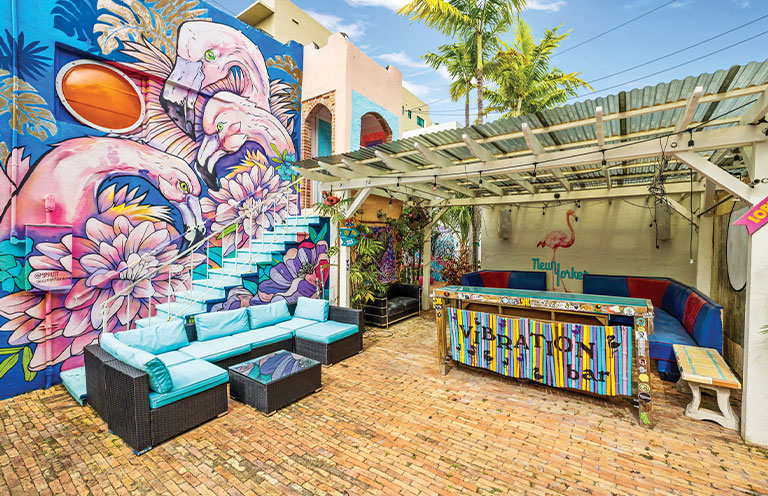
Keep heading north to 63rd Street, and you’ll reach a strip of Biscayne Boulevard that contains a few relics of Miami Modernism (MiMo), a design style that flourished during the 1950s. Although considerably more modest than Miami Beach’s sprawling resorts from this era, Eden Roc and Fontainebleau, those on the mainland still lure design pilgrims. The New Yorker Hotel Miami and Vagabond Hotel Miami, in particular, bear the hallmarks of the look: blindingly white concrete and turquoise accents, kitschy neon signage, a Space Age aesthetic evidenced by streamlined shapes, and a generous number of outdoor catwalks and courtyards.
To fuel up, try Vagabond’s in-house diner Ensenada Miami (“where Mexican flavors meet Miami vibes”), or move on to the tree-lined neighborhood of Morningside for Latin-inflected vegetarian entrees like aguacate toast or Brazilian acai bowls at Flora Plant Kitchen.
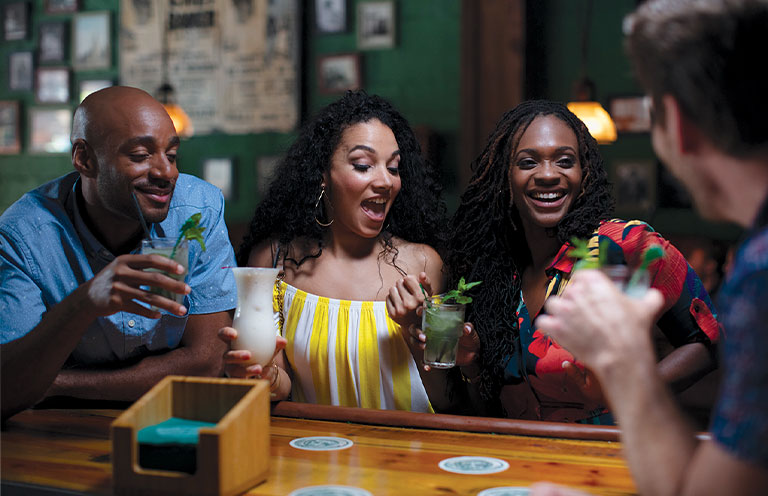
And no visit to Miami would be complete without a taste from the city’s largest ethnic population: Cuban Americans, representing nearly one-third of Miamians. Their presence is felt all over town, but in Little Havana, you’ll find the most stimulation: the sweet sips of dark rum, the swinging seduction of salsa, and the swirling aromas of coffee and cigars—particularly along Calle Ocho (8th Street).

Old Miami
South of downtown, majestic banyan trees and towering palms provide the same sensuous welcome that they offered to the Bahamians who first made their way to Coconut Grove in the 1870s. After strolling the small shopping core, indulge in a Sunday brunch of coconut French toast and thick-cut bacon in the verdant atrium of the AAA Four Diamond Mayfair House Hotel & Garden. Staring up at the exuberantly carved white plaster balconies and daydreaming to the tunes of a Latin jazz band is a quintessential Miami experience.
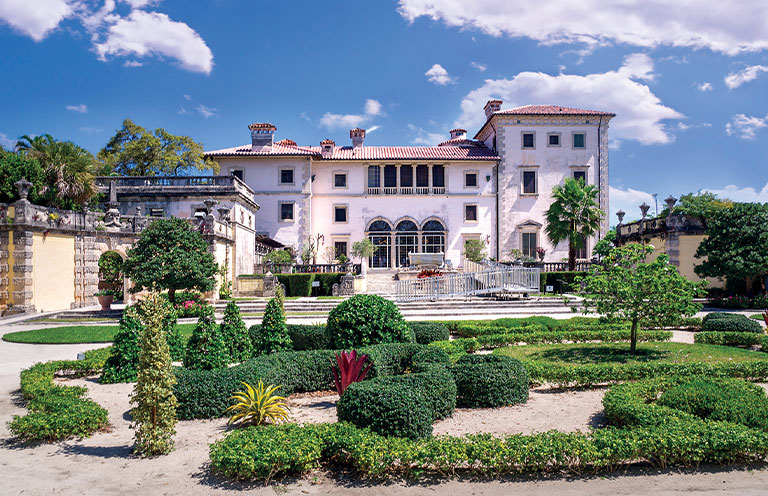
It also sets the stage for a visit to nearby Vizcaya Museum and Gardens, where architectural materials like limestone and coral are juxtaposed against exuberant tropical greenery, creating a grotto-like environment that the Mayfair, designed in 1985, clearly references. Vizcaya, built in 1914 as a vacation home for industrialist James Deering, in turn looks to Renaissance Italy for inspiration, both in the red-tile roof and interiors of its 54-room villa and, most magnificently, in the 10 acres of romantic bayside gardens adorned with statues, fountains, and an abundance of roses, orchids and water lilies.
Vizcaya is a feast for the eyes, an alluring vision from a bygone time. Whether you find your own masterpiece in this old-world Eden or in the propulsive energy
of the city’s contemporary scene, the magic of Miami will surely cast an artful spell.
Where to stay
Downtown’s AAA Four Diamond J.W. Marriott Marquis offers easy access to the Perez Museum and shopping at Brickell City Centre, plus it features a rooftop pool, spa and Daniel Boulud restaurant. Rates around $400/night.
Fabulously painted in citrus hues and sky blues, the exterior staircase at Arlo Wynwood holds its own in Miami’s most colorful neighborhood. Choose from an array of eateries, including a courtyard cocktail bar and a sushi restaurant. Rates around $300/night.
